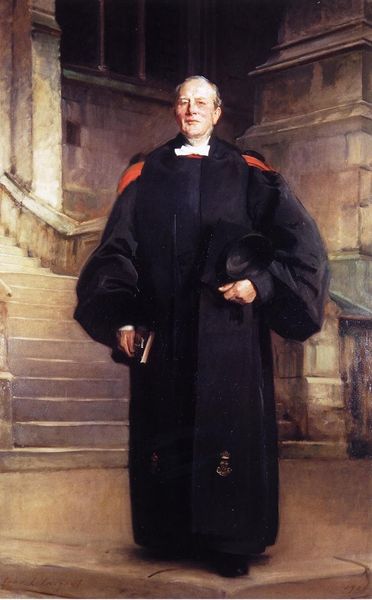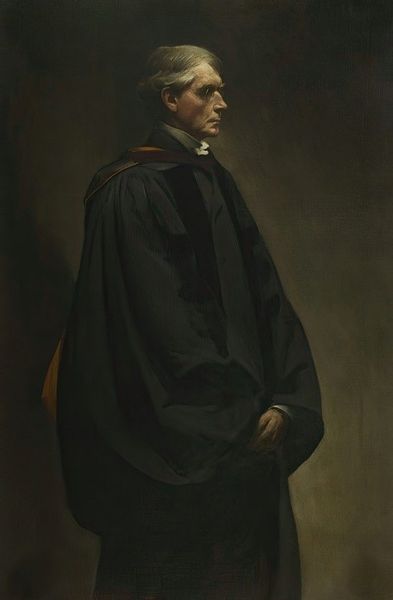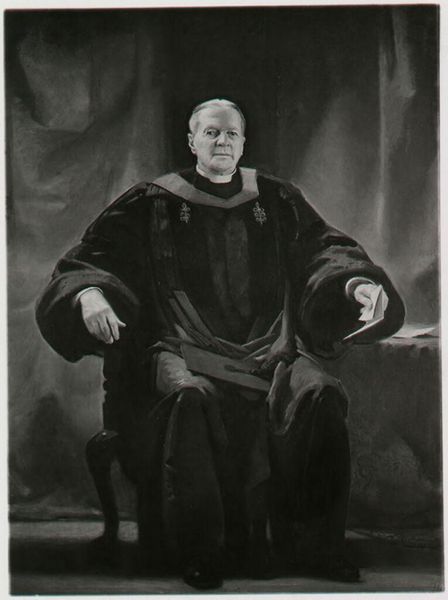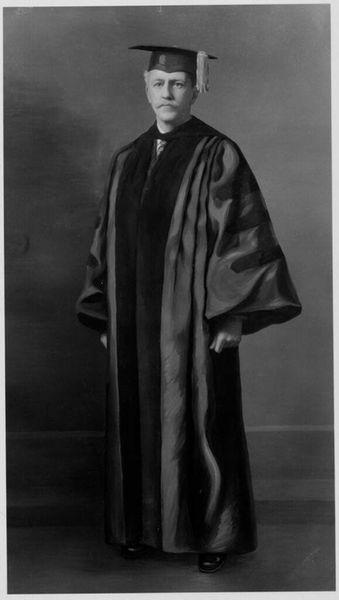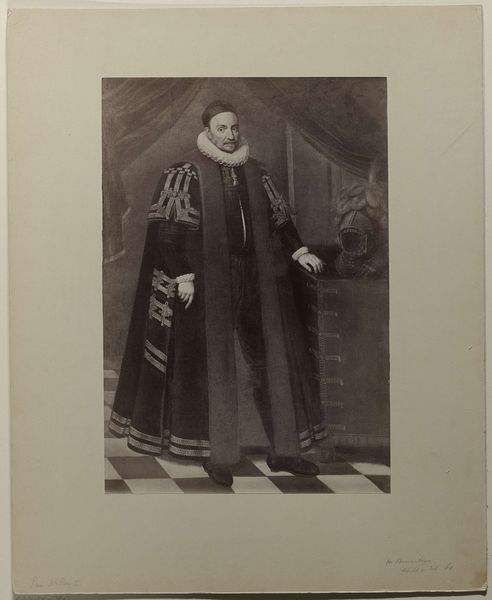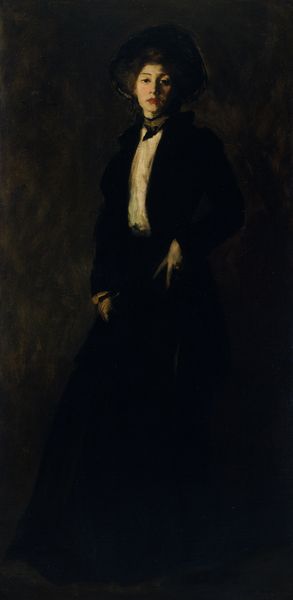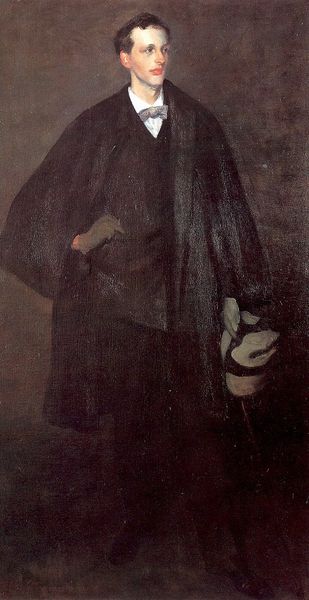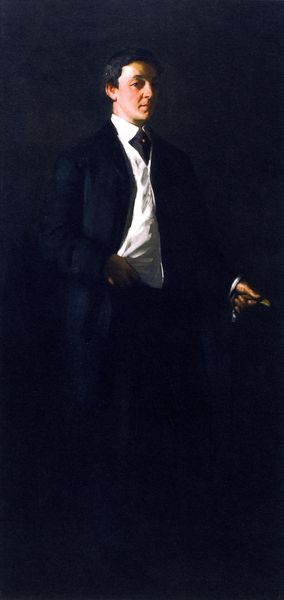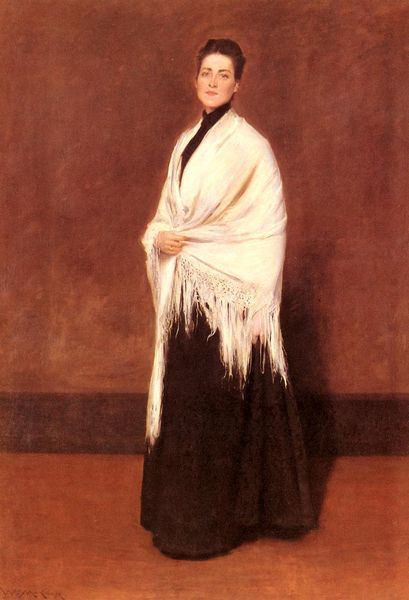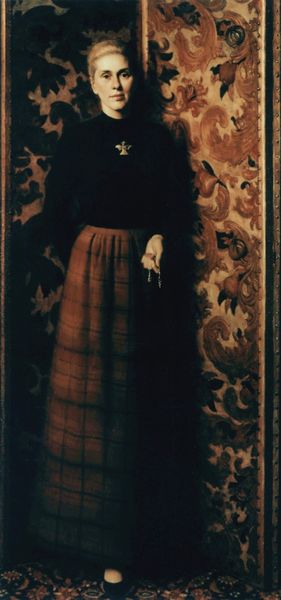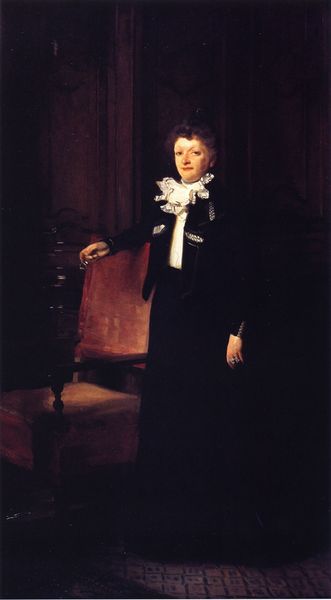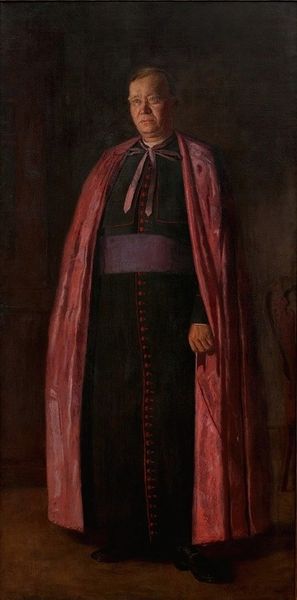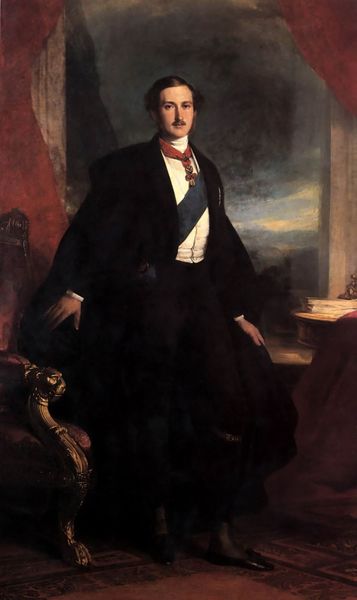
painting, oil-paint
#
portrait
#
neoclacissism
#
painting
#
oil-paint
#
history-painting
Dimensions: 189.2 x 114.3 cm
Copyright: Public domain
Editor: Here we have Goya's portrait of Juan Antonio Llorente, painted in 1812, using oil paint. The figure's dark robes create a somber tone, but the red sash catches the eye. What can you tell me about it? Curator: I find the application of paint and pigment particularly revealing. Consider the deep blacks and the texture – where did Goya source these materials? Were they readily available in 1812? The intense red might indicate specific dyes extracted for wealth display. Think about who was commissioning this and how access to material production shaped this portrait. Editor: So the materials themselves communicate status and power? Curator: Precisely. It’s not merely about Goya’s artistic skill; it is tied to Llorente’s social standing and networks and how access shaped what was put on that canvas. Where was it displayed? And for whom? Did the labor involved reflect Spanish workshops, or something more global? It changes our interpretation, right? Editor: Definitely! The painting then becomes less about the individual and more about the system that produced it. I never considered the raw ingredients. Curator: These materials provide insight into economic factors within the Neoclassical style and shift the understanding of portraits beyond aesthetic taste. Considering the social conditions of making unveils historical narratives of supply chains and craft dynamics embedded within artworks that tell compelling, under-explored stories. Editor: This has given me a lot to think about; there's a story within the materials and their means of production themselves, reflecting more than the painter’s talent alone. Curator: Exactly, recognizing such tangible contexts gives material expression to those often rendered invisible: craftsmen, miners, traders - makers involved that enable artmaking itself.
Comments
No comments
Be the first to comment and join the conversation on the ultimate creative platform.
